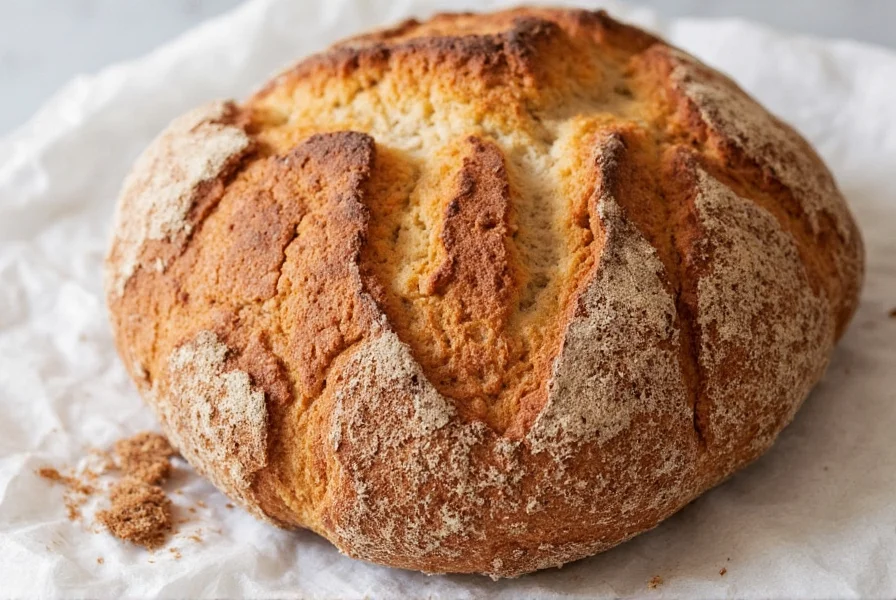Creating exceptional cinnamon sugar sourdough requires understanding how spice and sweetness interact with wild yeast fermentation. Unlike enriched doughs, this variation maintains sourdough's signature chew while delivering balanced flavor. The key lies in proper ingredient integration and adjusted fermentation timing to accommodate sugar's effect on yeast activity.
The Science of Flavor Integration
Sourdough's natural fermentation creates lactic and acetic acids that complement cinnamon's warmth. Sugar accelerates yeast activity initially but can weaken gluten structure if added too early. Professional bakers recommend incorporating cinnamon sugar during the lamination stage rather than mixing it directly into the dough. This technique prevents direct contact between sugar and wild yeast during bulk fermentation, preserving optimal rise while creating beautiful marbled layers.
Essential Ingredient Ratios
Precision matters when adapting sourdough for sweet variations. Our testing reveals these optimal proportions for a standard 750g loaf:
| Ingredient | Standard Sourdough | Cinnamon Sugar Variation |
|---|---|---|
| Bread Flour | 500g | 500g |
| Water | 350g | 340g |
| Starter | 100g | 100g |
| Salt | 10g | 10g |
| Cinnamon | - | 2-3 Tbsp |
| Sugar | - | 1/4 cup |
Step-by-Step Baking Process
Follow this specialized method for optimal cinnamon distribution and texture:
- Mix dough ingredients (excluding cinnamon and sugar) using standard sourdough technique
- Complete 4-5 sets of stretch and folds during first 90 minutes
- During final fold, sprinkle cinnamon sugar mixture evenly over dough surface
- Gently roll dough into tight cylinder, sealing edges
- Reduce bulk fermentation by 15-20% (typically 3-3.5 hours at 75°F)
- Shape into boule and cold retard 12-16 hours
- Bake at 450°F with steam for first 20 minutes
Troubleshooting Common Issues
Even experienced bakers encounter challenges with flavored sourdough. Here's how to address frequent problems:
- Weak cinnamon flavor: Use freshly ground cinnamon and increase to 3 Tbsp. Bloom spices in minimal warm water before mixing
- Dense crumb: Sugar draws moisture from gluten. Reduce water by 10g and extend autolyse by 15 minutes
- Over-browning: Lower oven temperature by 25°F during final baking stage
- Flavor imbalance: Adjust cinnamon-to-sugar ratio based on starter maturity. Mature starters require less sugar
Advanced Flavor Development Techniques
For exceptional results, consider these professional approaches:
Creating a cinnamon-infused starter 24 hours before baking enhances flavor complexity without compromising fermentation. Combine 50g active starter with 1 tsp cinnamon and 50g water/50g flour. This builds spice notes gradually while maintaining microbial health. Alternatively, make a cinnamon syrup (1/4 cup water + 2 Tbsp sugar + 1 Tbsp cinnamon simmered 5 minutes) to replace some hydration water, adding depth without sugar's inhibitory effects.
Serving and Storage Recommendations
Cinnamon sugar sourdough reaches peak flavor 12-24 hours after baking. The sugar content makes it more perishable than plain sourdough - consume within 3 days at room temperature. For longer storage, freeze sliced portions in airtight containers. When reheating, wrap in damp parchment and warm at 300°F for 8-10 minutes to restore crust texture while preserving the delicate spice distribution.











 浙公网安备
33010002000092号
浙公网安备
33010002000092号 浙B2-20120091-4
浙B2-20120091-4